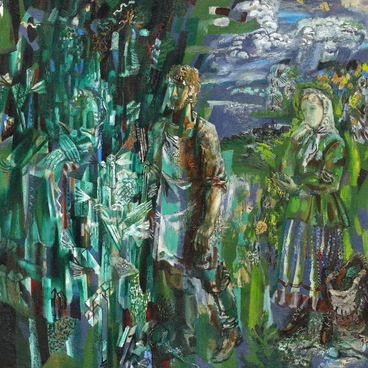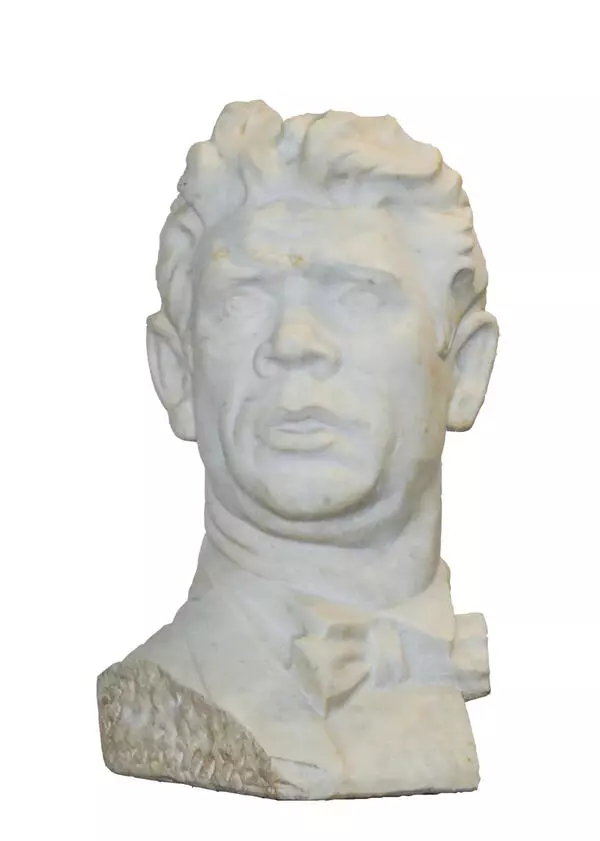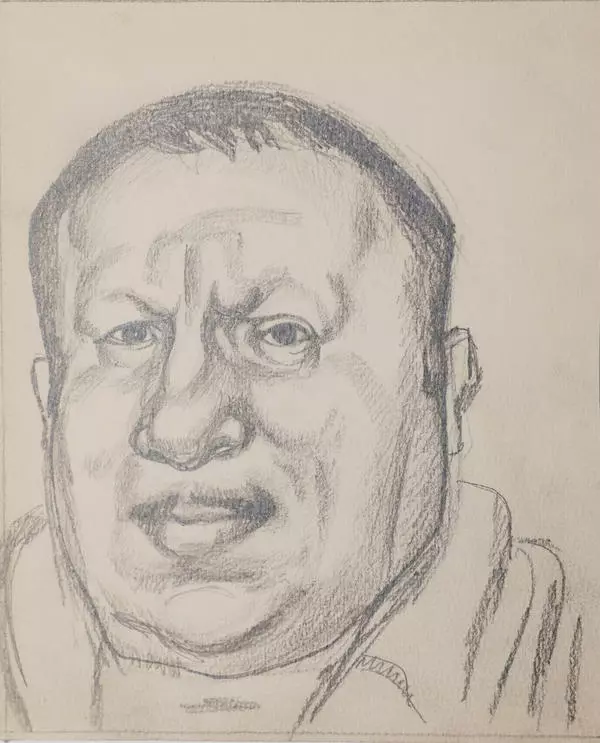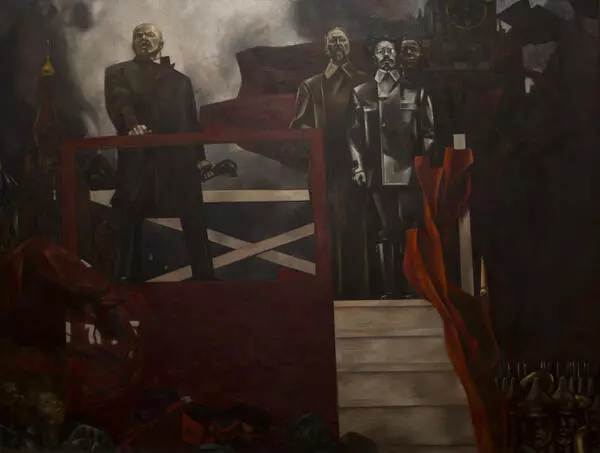Gennady Mosin dreamed of becoming an artist since childhood. His passion for drawing and painting for hours on end soon turned into a true talent. Despite some difficulties, he studied art first in Sverdlovsk, then at Ilya Repin Leningrad Institute. After graduating in 1957, he was offered to stay in the capital as a painter. However, Mosin decided to return to the Urals. He was an active representative of the Yekaterinburg artistic scene. His paintings of the late 1950s–1960s were devoted to the events of the revolution and the Russian Civil War, and those very paintings brought him fame and recognition.
However, his visual interpretation of the leaders and other political figures did not always stay within the approved art limits and soon fell out of favor with the Soviet authorities. At some point, Gennady Mosin stopped receiving commissions for monumental paintings from the state. That drove him to try other genres. In the 1970s, Mosin’s illustrations, portraits, and landscapes started participating in exhibitions. At the time, it was a common thing for artists to go on trips around the country to paint in the open air. Apparently, the painting “In the Land of Salavat” created in 1970 became the result of one of such trips.
The canvas is almost perfectly square. The pictorial space on the left and right sides of the picture is occupied by mountains and hills, covered with grass. They stretch upward, grand in comparison with the trees and the horse. The color scheme is mostly restrained with the domination of brown and green shades. The painting has some decorative value, which is no coincidence.
The Soviet art of the mid-20th century had an artistic movement called “the austere style”. The painting style of Gennady Mosin betrays the influence of this trend with the use of large spots of color, clear contours, concise shapes, generalization, and monumental figures in the landscape “In the Land of Salavat”. The name of the picture and the nature depicted in it refer to the beauties of the Republic of Bashkortostan. It is located in Eastern Europe, in the south of the Ural Mountains between the Volga, Ural, and Ob rivers. The Bashkir nature is rich and diverse. Bashkiria can boast several biomes at once — conifer-broadleaf, mixed and birch forests, taiga, grassland, and steppe.
The exact name of the area depicted in the picture is unknown. The republic is remarkable for many amazingly beautiful rocks and mountains all over its territory. The mountains painted by Mosin resemble the peaks of the Nurali Ridge, a low picturesque mountain formation in the Southern Urals.
However, his visual interpretation of the leaders and other political figures did not always stay within the approved art limits and soon fell out of favor with the Soviet authorities. At some point, Gennady Mosin stopped receiving commissions for monumental paintings from the state. That drove him to try other genres. In the 1970s, Mosin’s illustrations, portraits, and landscapes started participating in exhibitions. At the time, it was a common thing for artists to go on trips around the country to paint in the open air. Apparently, the painting “In the Land of Salavat” created in 1970 became the result of one of such trips.
The canvas is almost perfectly square. The pictorial space on the left and right sides of the picture is occupied by mountains and hills, covered with grass. They stretch upward, grand in comparison with the trees and the horse. The color scheme is mostly restrained with the domination of brown and green shades. The painting has some decorative value, which is no coincidence.
The Soviet art of the mid-20th century had an artistic movement called “the austere style”. The painting style of Gennady Mosin betrays the influence of this trend with the use of large spots of color, clear contours, concise shapes, generalization, and monumental figures in the landscape “In the Land of Salavat”. The name of the picture and the nature depicted in it refer to the beauties of the Republic of Bashkortostan. It is located in Eastern Europe, in the south of the Ural Mountains between the Volga, Ural, and Ob rivers. The Bashkir nature is rich and diverse. Bashkiria can boast several biomes at once — conifer-broadleaf, mixed and birch forests, taiga, grassland, and steppe.
The exact name of the area depicted in the picture is unknown. The republic is remarkable for many amazingly beautiful rocks and mountains all over its territory. The mountains painted by Mosin resemble the peaks of the Nurali Ridge, a low picturesque mountain formation in the Southern Urals.




